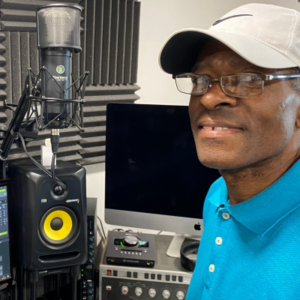Malcolm John Rebennack was born in New Orleans in 1941. As a teenager he learned to play guitar and started to get involved in the music industry. Thanks to his father’s contacts in the business, he was able to visit local recording studios and perform in local clubs. He also met Professor Longhair and began performing with him. Unsurprisingly, Mac lost interest in school and was expelled, enabling him to launch his career full-time. He joined Ace Records and worked on the production team, contributing to recordings by James Booker and Earl King. From the late fifties he was also working as a session musician on guitar, until he sustained an injury to his left hand during a show in Florida. A bullet was fired, which hit his ring finger. He tried to switch to bass guitar, but soon decided that the best option was piano.
In the early sixties, Mac got involved in some criminal activities, which resulted in a two-year spell in Fort Worth prison. On his release he took the decision to move to Los Angeles for a fresh start. He joined the Wrecking Crew group of session musicians and played on recordings by a range of artists including Sonny & Cher and Canned Heat. Around this time, he also started working on his own songs. He came up with the idea of a concept album, based around a nineteenth-century voodoo root doctor Dr. John Montaine. Mac envisaged a dramatic stage performance of the album, with Montaine’s role played by a New Orleans friend of his called Ronnie Barron. Montaine was quite a character. He was originally from Senegal, but had come to New Orleans from Haiti, bringing with him a reputation as a spiritual healer. Ronnie Barron fitted the part well. He had a collection of human and animal skulls, alongside live lizards, and snakes. He sold charms and small bags to put them in, called “gris-gris”, which gave protection to those who wore them. When Ronnie dropped out of the project, Mac decided to play the part himself, and a new stage name was born. Dr. John simply dropped the surname Montaine.
Dr. John’s first album was duly recorded and released on the Atco label in 1968, entitled “Gris-Gris”. Although it was recorded at the Gold Star studio in Los Angeles, the team that made it had a strong New Orleans input. The album was produced by Harold Battiste and featured singers Jessie Hill and Shirley Goodman, with John Boudreaux (drums) and Plas Johnson (saxophone) adding to the Nola vibe. The songs on the album attempt to create the feeling of being part of an elaborate ceremony, that is filled with spells and incantations, and where a sense of foreboding is never far away. Thom Jurek calls it “a psychedelic masterpiece” in his AllMusic review, but it is hard to categorise the music. The stage performances that followed developed the lead figure of Dr. John, with a deliberate attempt to create an act that was part medicine show and part voodoo ceremony. The costumes used meant that the spirit of Mardi Gras was never far away.
Three more albums were released exploring similar territory to “Gris-Gris”. They were “Babylon” in 1969, “Remedies” in 1970 and finally “The Sun, Moon & Herbs”, which attracted a cult following. Mick Jagger and Eric Clapton made contributions to the last of these.
Mac then decided to focus more on his New Orleans roots for his next recordings. “Dr. John’s Gumbo” (1972) is a tribute to the artists that he had grown up listening to, with an emphasis on New Orleans piano. Three songs from Huey “Piano” Smith, including a three-song medley co-written with Johnny Vincent, plus three from Earl King (one co-written with Johnny Vincent), two old New Orleans songs (“Iko Iko” and “Stack-A-Lee”) and “Tipitina” from Professor Longhair combine to make an excellent album.

Dr. John in concert, Jazz in Vienne, France, 14th July 2006
Photo: wpopp (Wikimedia Commons) (cropped)
The follow-up was 1973’s “In the Right Place”, which enabled Mac to finally break into the charts. The opening track, “Right Place, Wrong Time”, was released as a single, reaching number nine on the Billboard Hot 100, while the album stayed on the Billboard 200 Albums chart for thirty-three weeks, peaking at number twenty-four. It is more commercial than the previous releases and was recorded much nearer home, at the Criteria Studios in Miami, Florida. Allen Toussaint was in charge of production, arrangements and conducting, as well as playing five different instruments during the sessions. The Meters were joined by Gary Brown on saxophone to complete the core team, with Mac writing most of the songs.
The following year, when Allen Toussaint and Marshall Sehorn opened their new Sea-Saint studios, Dr. John was one of the first to record there. The album “Desitively Bonnaroo” featured support from The Meters and Gary Brown, as before, and achieved minor chart success.
Dr. John went on to record a total of thirty studio and nine live albums, across a range of genres. He explored Jazz with Chris Barber and Creole and Cajun music. He combined Blues and R&B with Funk and Boogie-woogie. But all the time, the songs and tunes he wrote were imbued with the spirit of New Orleans. Dr. John’s Grammy award-winning 1992 album “Goin’ Back to New Orleans”, arranged and produced by Wardell Quezergue, sees Mac paying tribute to a wide range of earlier contributors to the music of New Orleans. The album draws on Jazz, Blues and early Rock & Roll, including music written by W.C. Handy, Jellyroll Morton, Huddie Ledbetter, Professor Longhair, Fats Domino, Dave Bartholomew, and Huey “Piano” Smith. As one of the few White artists to contribute to New Orleans R&B, Mac certainly saw the importance of the Black artists who created the sound.

It is important too to acknowledge the contributions Mac Rebennack made to other artists’ projects. He continued to work as a session musician for many years and has played and sung on a host of albums by some surprising names. Here are a few: Aretha Franklin, the Rolling Stones, Levon Helm, Canned Heat, Van Morrison, Christina Aguilera, B.B. King and Hugh Laurie. There are many more.
Dr. John died in 2019, having won six Grammy Awards. He had been inducted into the Rock & Roll Hall of Fame in 2011. So, how important is his contribution? He certainly added a sense of excitement and a flavour of the exotic to the New Orleans sound. His voice is not to everyone’s taste, but his piano-playing is absolutely in the tradition of Professor Longhair, Huey Smith, and Allen Toussaint. His stage performances were often very theatrical, and his performance attire was always fit for Mardi Gras. These performances were his major contribution to ensuring that New Orleans R&B stayed vibrant, alive, and unique.
















